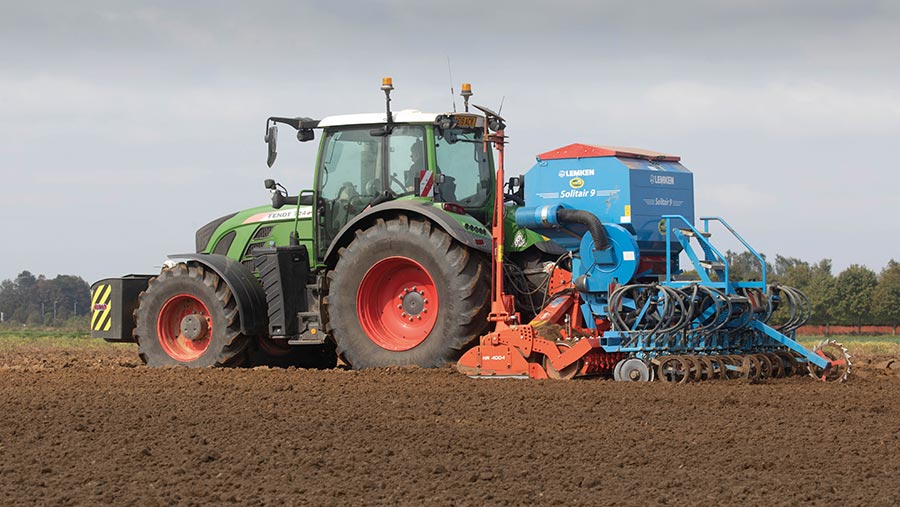How a new soil scoring tool picks the best cultivation option
 © Tim Scrivener
© Tim Scrivener A new crop establishment tool which assesses a range of soil management factors is set to help farmers identify whether a change in cultivation may benefit their soils.
There is an increased drive towards direct drilling, and many farmers are beginning to reduce the number and depth of their cultivation passes across their crop production systems to save diesel costs and promote soil health.
The tool, known as the Establishment Approach Assessment, was developed by the AHDB and aims to highlight which soils may be suited to reduced tillage.
See also: Yukon spring beans yield well in Somerset
Soil scores
The Establishment Assessment uses a simple soil scoring sheet which takes into account 10 soil management factors and their importance to a farm’s unique system.
Users are asked to allocate a score on a 1–10 scale to each of the following:
- Rainfall
- Soil
- Management
- Drainage
- Residues/organic matter
- Cover/catch crop
- Trafficking policy
- Irrigation
- Weeds
- Pests
AHDB knowledge exchange manager Harry Henderson explains that soil drainage is scored as follows:
- 1-3 points Drainage issues are common
- 3-5 points Some drainage issues present
- 6-8 points Well drained, low permeability
- 9-10 points Freely drained, permeable
The scores from each category are then combined to produce a total score which correlates to three suggested establishment options (depending on what type of crop is grown) which helps to identify potential improvements across a farming system.
The higher the overall field score the greater the opportunity to adopt less intensive cultivation approaches, as these soils are most likely suited to reduced-tillage.
Where possible, users should adapt their management methods to achieve higher scores.
Combinable crops and leys |
|
|
Total score |
Establishment options |
|
<60 |
Varied approach required, with occasional inversion tillage |
|
60–70 |
Aim to reduce tillage (option to strip till possible) |
|
>70 |
Aim to significantly reduce tillage (option to direct drill, when appropriate) |
Potato, root and vegetable crops |
|
|
Total score |
Establishment options |
|
<55 |
Conventional approach often required, but varied in response to season and conditions |
|
55–65 |
Aim to reduce tillage (intensity) and depths for subsoiling, ploughing, bed tillage and separation depth |
|
>65 |
Aim to reduce tillage (operations and intensity) and depths for subsoiling, ploughing, bed tillage, separation depth and de-clodding |
The tool is accessible online at ahdb.org.uk/arablesoils or a paper copy is available on page 31 of the AHDB Arable soil management: Cultivation and crop establishment booklet.
AHDB knowledge exchange manager Harry Henderson was talking at an AHDB webinar discussing autumn cultivations and winter crop establishment.
Before considering reduced cultivations
- Determine if the soil type is suitable
- Start with fields where soil structure and drainage are in a good state
- Assess how often reduced cultivations may have been appropriate over recent seasons
- Carefully assess whether soil and weather conditions are suitable each season
- Be flexible: change back if conditions dictate
- Manage trafficking and ground pressures; minimise the impact of heavy equipment
- Ideally, carry out all cultivations on friable, workable soil
- Soil-loosen, if necessary. Grow roots through the soil whenever possible to stabilise structure
- Assess current system and equipment needs compared with those required for reduced cultivations
- Change to a new system in a planned manner. Soil type will often choose your system for you
- Consider machinery-sharing, contracting, or trading in some existing machinery to fund reinvestment

